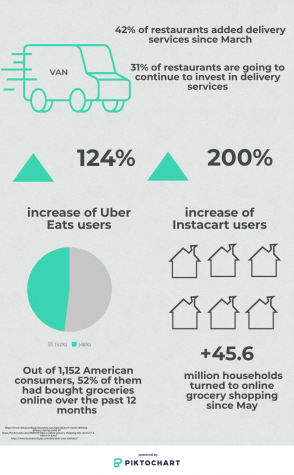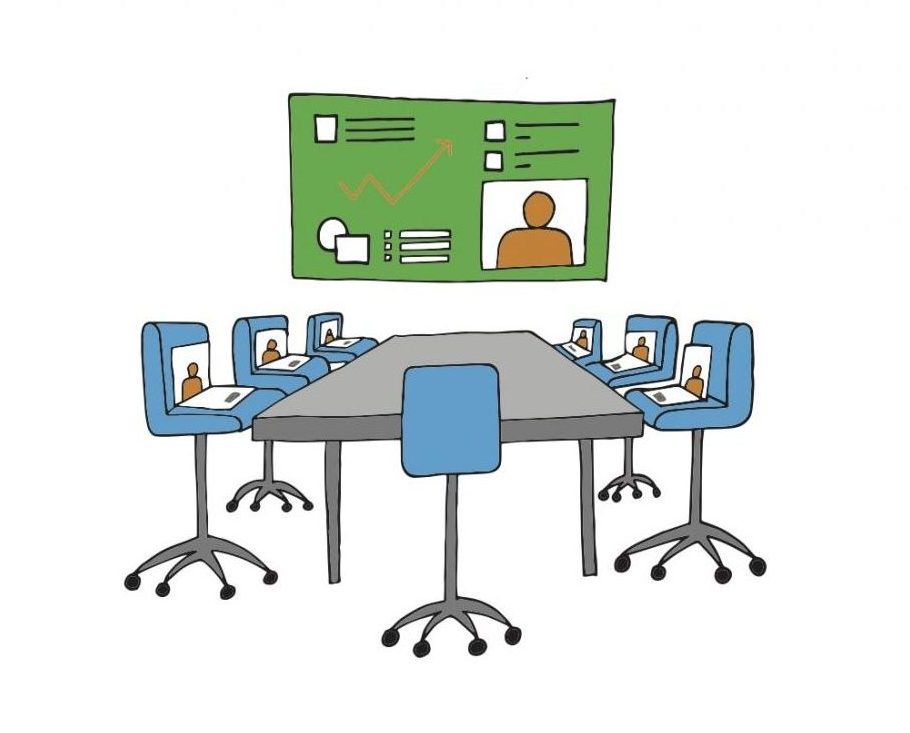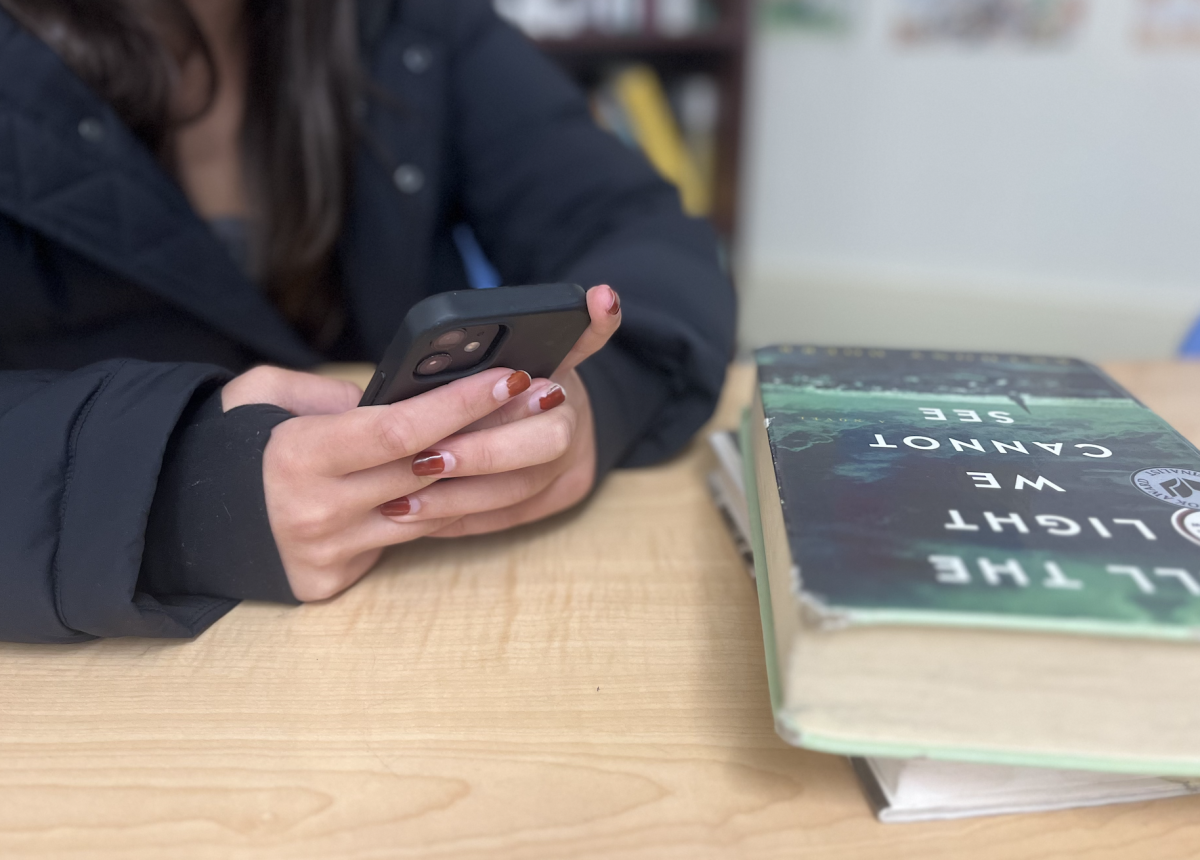Tired eyes open to see the flash of a bright screen. An Apple News alert updates the death toll for the coronavirus. Each outing is a risk, and one can’t help but wonder if the fabric mask tucked behind their ears is an entirely impenetrable barrier to the spreading disease. Although The New York Times reported on Nov. 18 that the Pfizer vaccine was effective on 95 percent of patients and warranted no severe side effects, some aspects of life, professionals say, are forever changed. From huge leaps in the medical world to massive growth in the food delivery industry and a shift away from working in person, the world we now live in dramatically differs from what it was in March.
Redwood parent and former Chief of Staff at MarinHealth Medical Center Kerry Davidson M.D. explains that the coronavirus has changed the medical industry in terms of data collection and drug development.
“I think COVID-19 is going to have a very exciting silver lining where things like data aggregation, learning how to use gene tools to create new vaccines for illnesses and other new technologies are emerging. It’s very exciting, and it will benefit people in the future,” Davidson said.
According to Davidson, the groundbreaking speed at which scientists developed the COVID-19 vaccine will also set a new standard for how fast all medical treatments progress.
“I think it’s certainly possible that we’ll see other vaccines and treatments being created faster,” Davidson said.

She bases this prediction on the fact that many of the tools being used to combat COVID-19, such as sequencing the genome, clipping genes and designing drugs based on the shape of proteins in the body, were developed in response to HIV and AIDS.
“Many of these [tools] came out of this incredible push to try to get HIV under control and to create drugs to treat that viral illness,” Davidson said.
As a hospitalist, a doctor who provides general medical care to hospitalized patients and often leads the hospital medical team, coordinates care for inpatients and other lab work, Davidson has seen advances in how appointments are held and believes those changes are also here to stay.
“[If someone doesn’t need to come in-person,] virtual doctors visits will absolutely continue, and I think they should. For following an existing problem with somebody who already knows [their doctor and] who’s maybe already been examined, it is super-efficient,” Davidson said.
Beyond newfound practices in the medical world, COVID-19 may have permanently altered how we view all illnesses, as coronavirus safety precautions are now an ingrained part of people’s daily lives.
“We already see in some communities that flu and common colds are having lower incidents because people are following what we would call universal precautions: wash your hands more, don’t touch your face, [and] cover your face. [A mask] protects both the wearer and the person they’re around,” Davidson said. “Maybe people will be more aware of staying home and not exposing other people to whatever they have. I think employers will be more comfortable with saying, ‘If you’re not well, stay home.’”
Other long-term effects of COVID-19 will be an overall greater appreciation for family members, the beauty of nature and the ability to get outside after sheltering indoors for the past months.

“Everybody had to slow down a little bit. And I think people learned a little bit more about what was important to them. People had to settle down at home, have family meals and talk, not go out so much or not travel as much and maybe learn to enjoy the people they were already close to. And particularly in Marin, people became appreciative of our beautiful community and all the outdoor resources we have,” Davidson said.
Another byproduct of staying home was the rise in food and grocery delivery. Redwood alumni and current University of California Berkeley student Alex Aguero decided to take jobs with Uber Eats and Postmates from April to June because of the sales spike.
“There was definitely a lot of business. My brother, who started delivering before the pandemic hit, told me that there were a lot more orders during the pandemic than ever before,” Aguero said.
According to a survey from Brick Meets Click, a food marketing and sales consulting firm, Aguero’s experience was not uncommon. In fact, 31 percent of U.S. households said they had used an online delivery or pickup service during March, and 26 percent of those surveyed said that they were using an online grocery service for the first time.
Instacart, an American company that operates a grocery delivery service via a website and mobile app, further proves this trend. The company saw its app downloads grow by over 200 percent from February to mid-March. Sanu Dhillon, a senior payroll accountant at Instacart, has a few ideas about what has made Instacart so successful beyond COVID-19.
“Their platform [has brought them success] and the usability of the app. Then [there is] the niche in the market; being able to deliver groceries to people. Our customer base is 82 percent females, between 25 and 35 years old and mothers at that. I think that [customer base] also plays a big role in what makes it successful,” Dhillon said.
Dhillon believes this success is here to stay even after COVID-19 due to their new larger group of consumers.

“[Grocery and food delivery is] something that will continue to grow. One of the biggest hurdles for businesses is getting people to use their applications or actually to find test users. The pandemic has kind of forced people to use [Instacart] and get an understanding [of it]. I think once you finally get people hooked on it, it just continues whether or not the pandemic is going [on],” Dhillon said.
COVID-19 will also change the leasing of office space forever. Possibly one of the most enormous shifts people will see post-COVID is more adults working from home. Joseph Fitzpatrick is the former regional operations manager for the technology team at WeWork, a coworking company that provides flexible shared workspaces for technology startups. However, he recently took a job at Colliers International, a real estate company, after his team at WeWork was cut from 500 people to 20 due to COVID-19.
Although WeWork is not the only real estate company that has lost a significant portion of their renters. Companies everywhere are downsizing their office space permanently. Since March 17, the Alliance of Chief Executives has administered a CEO survey to more than 300 Alliance member companies to gauge how businesses are experiencing the COVID-19 crisis. They reported that when asked what their plans are for workplaces after the pandemic, 31 percent of CEOs will allow unlimited working from home from anywhere and anytime. In comparison, another 31 percent will enable limited working from home at around two days per week. When asked how much they planned to reduce their leased office space, 29 percent responded that they would get rid of 75 percent to 100 percent of their office space.
Fitzpatrick says this trend will lead to increased flexibility for employees that will especially benefit families. He explained why by outlining a scenario that could take place locally.

“Say a company used to have one location in downtown San Francisco. Everybody had to commute there from all over the Bay Area. Now, with the pandemic, that’s going to change. There will be multiple satellite offices, and that company will be forced to have an office in the North Bay, the East Bay, the South Bay, the peninsula and San Francisco. People with kids and families perhaps will have the flexibility to just drive a few minutes into work,” Fitzpatrick said.
Working virtually will also expand job opportunities worldwide as a physical presence will no longer be a job requirement.
“There’s always been companies like Upwork, where you could outsource data entry and task management from the Philippines, India or the Middle East. But I think those things will grow, and people are going to capitalize on this new kind of workplace as well,” Fitzpatrick said.
As companies continue to allow their employees to work from home, the interviewing process will shift so that human resources (HR) plays a larger role. HR must do negotiations to ensure that employee progress can be tracked online.
“I think that’s going to be a huge negotiation tactic. HR will be heavily involved in recruiting, a lot more than they were before,” Fitzpatrick said.
After the pandemic, people will potentially not have to come to work every day of the week and certainly not for the entire day. Fitzpatrick explained that there will most likely be a rotating schedule for all businesses where people will only work one to three part-time days a week in the office.
“I think the entire workplace has changed forever,” Fitzpatrick said.
From medical professionals to students, teachers and working parents, Fitzpatrick’s belief resonates; not only has the entire workplace changed forever, but many aspects of the world have too.












